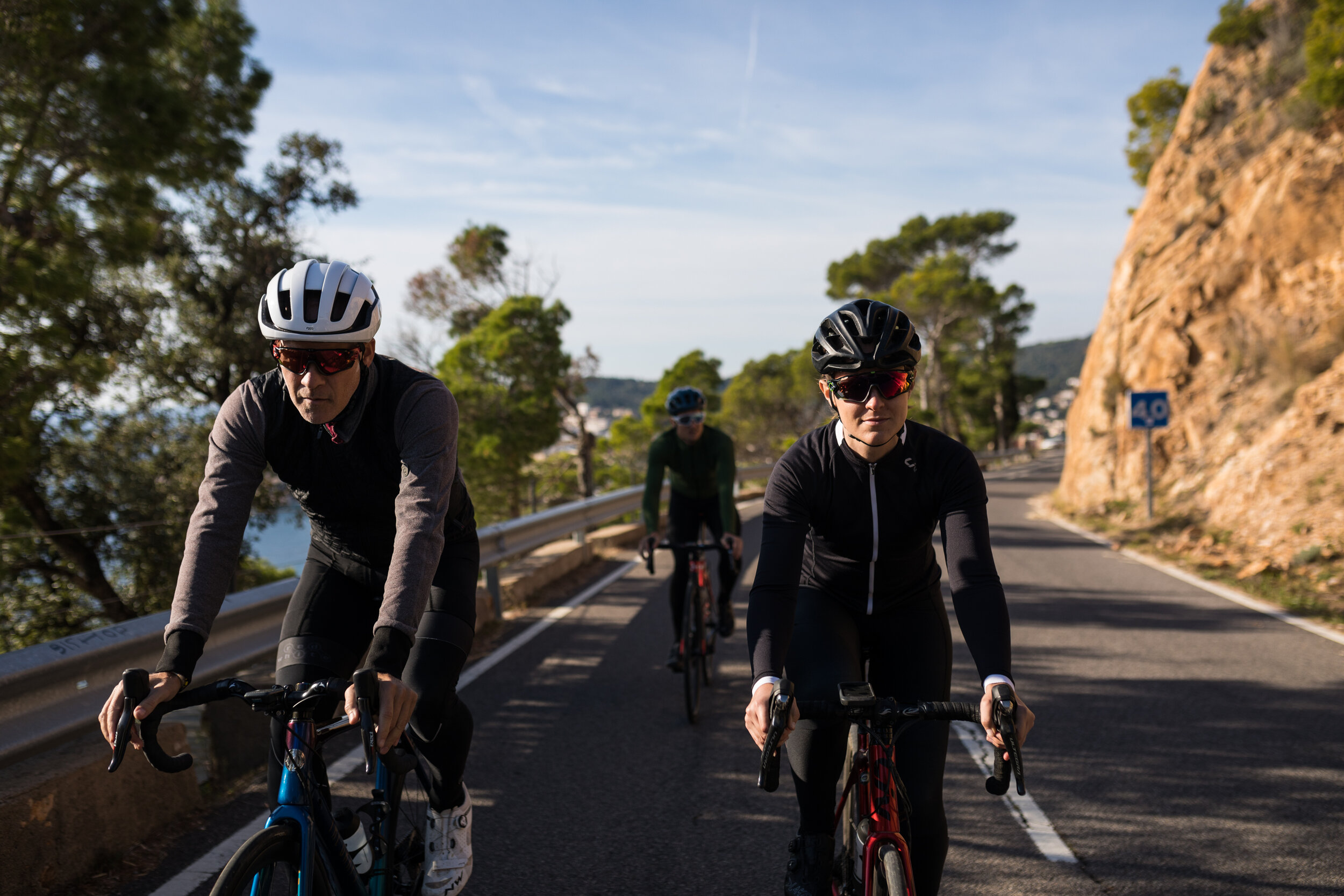Hydration for cycling performance
The amount of fluid you need to drink during cycling to remain hydrated and optimise performance depends on multiple factors, including environment, exercise duration and intensity.
How much should you drink while cycling?
Amongst other factors, the amount of fluid endurance cyclists are recommended to drink mid ride will vary according to a) how long you are riding for (duration) and b) just how hard an effort you're putting in (intensity).
Endurance cycling duration is often separated into short duration of less than 1 hour, moderate duration of 1-2 hours and endurance of over 2 hours in length.
Exercise intensity in a performance setting is measured as either VO2max or VO2peak - the maximum amount of oxygen your body is capable of using in a minute of exhaustive exercise. The harder you work, the higher the intensity and percentage of your VO2max/peak. The fitter and more trained you are, the higher your VO2peak will be.
Current scientific evidence provides the following guidelines for fluid intake during endurance cycling in temperatures of 20-30 degrees Celcius.
Cycling <1hr, high intensity (80% VO2peak)
Drinking during short duration high intensity cycling may not be required and in some circumstances has been shown to decrease performance and power.
However, an exception to this would be if you are racing indoors on Zwift! As your body temperature increases considerably when training or racing indoors, drinking fluid in short duration cycling can help keep your body temperature regulated which can help you maintain a better power and intensity.
Cycling 1hr-2hr, moderate intensity (60-75% VO2peak)
Drinking 0.15 - 0.20 ml/kg/min during moderate intensity cycling can improve performance by >2%.
For a 60kg athlete cycling for 1 hour this would be:
0.15 - 0.20 ml x 60 kg x 60 min
= 540 - 720 ml fluid (total)
A 60 kg athlete cycling for 2 hours
0.15 - 0.20 ml x 60 kg x 120 min
= 1080 - 1440 ml fluid (total)
Cycling >2 hr, moderate intensity (60-75% VO2peak)
For cycling over 2 hours in duration, drinking regularly (0.14 - 0.27 ml/kg/min) can help improve performance by >3%
For a 60 kg athlete cyclist cycling for 3 hours this is:
0.14 - 0.27 ml x 60 kg x 180 min
= 1512 - 2916 ml fluid (total)
Should you drink to thirst or drink to a plan?
Both drinking to thirst and drinking to a plan are useful strategies to ensure adequate fluid is drunk while cycling. Whether one strategy is better than the other is yet to be determined.
Like most things in sports nutrition - it all depends!
If you are someone who forgets to drink - then it may be better for you to drink to a plan or put prompts on your Garmin to remind you to drink.
If you are someone who drinks a lot on the bike without needing reminding, then drinking to thirst might suit you best.
Use which ever method suits you best according to your personal preference, the environment you ride in, the course, type and race duration, rules and drinking opportunities.
Test your individual fluid requirements
Of course, every athlete is individual and the exact amount of fluid required will depend on how much you sweat, the environment temperature plus the opportunities you have to drink during an event. Some cyclists may find that they need more or less fluid for optimal performance.
As a general guide, to avoid dehydration I would recommend aiming to drink at least 500ml (1 bidon) per hour to be optimally hydrated.
Test it out in your own training, make a note of what works best for you, what opportunities you have to drink and remember never use a race to experiment with anything new!
Gemma


